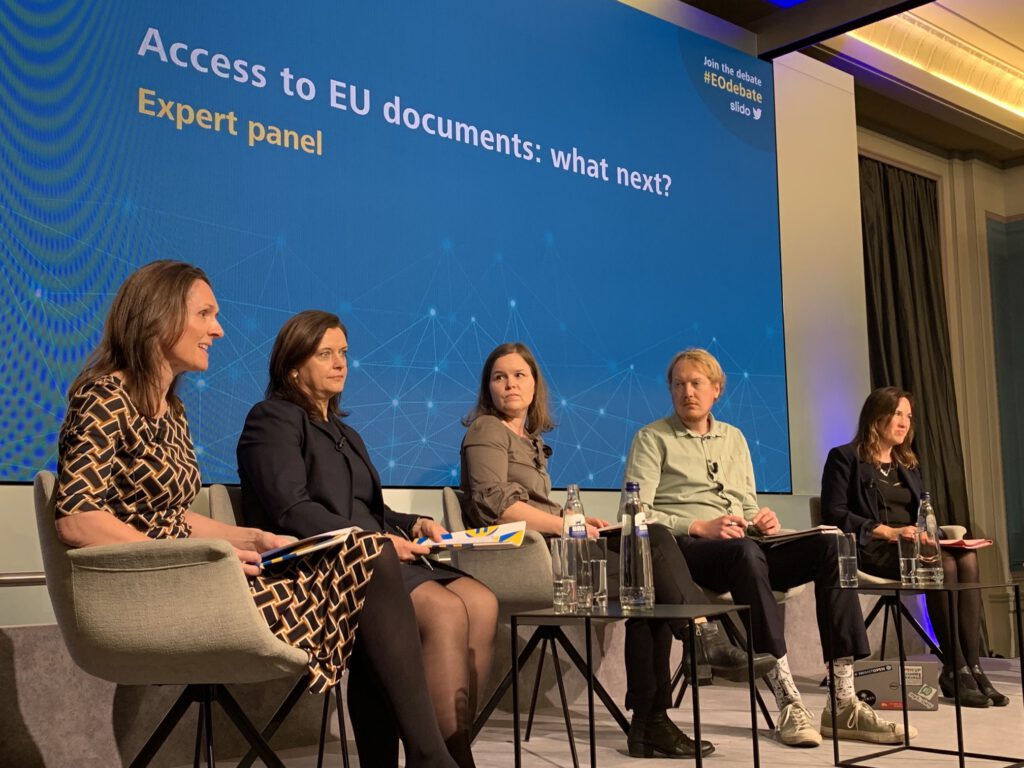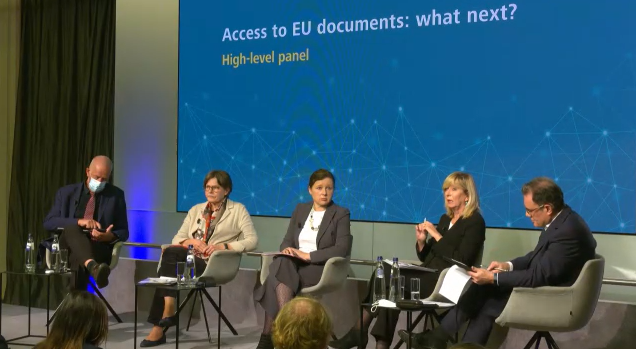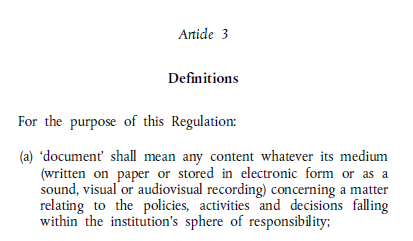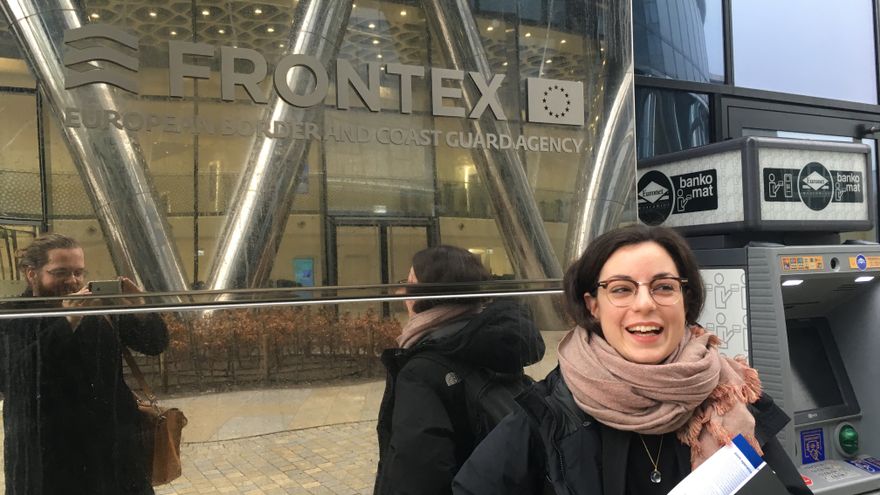Part II: The expert panel sees problems aplenty with Regulation 1049/2001 – but not everyone is keen to trade it for something else.
Conference signals start of a broader call to reopen revision of EU access to documents law. Second part of two reports on where the EU stands with access to documents.

In the first post of this diptych on last week’s European Ombudsman conference, we covered the exchange of views of speakers in the so-called “high-level panel”: senior representatives from the EU’s three legislative institutions. It appeared that after 12 years of stalled reform talks and two withdrawn legislative reform proposals, a renewed appetite exists among the institutions to try once again to reignite the reform process. This renewed dynamism in what was until recently described by a stakeholder as a “toxic dossier” may at first come as a surprise. Upon closer listening, it appears that each institution may have its own –divergent– reason for wanting to reopen talks.

In the second panel, the transparency experts were given the floor: how did they assess the current state of EU transparency policy and what seemed to them the best way forward on Regulation 1049/2001? Some believed that legislative reform was indeed needed. Yet all agreed that a more faithful implementation of the existent law would already make a big difference.
Are things bad as usual, or uniquely worse?
When a group of transparency advocates is invited to reflect on an existing situation, one can be sure that there will be plenty of critical edge. This was no different in the conference’s expert panel, which featured an NGO director, an investigative journalist, and a legal scholar steeped in socio-legal research. The panel was completed by a Commission official (who admirably held her ground), and a senior official from the Ombudsman’s office.
Helen Darbishire, executive director of the NGO Access Info Europe, was given the floor first. Access Info has been around for well over a decade by now and made name early on with a spectacular win in the Access Info Europe litigation saga well-known to EU institutional lawyers. Darbishire reminded the audience of the larger question looming behind the narrow discussion on the technicalities of access to documents law. Transparency, at the end of the day, relates to making available the information that citizens needs to appreciate what the EU does and to make its decision making legitimate. Darbishire pointed out that the Commission’s Europe for Citizens fund between 2014 and 2020 spent 187 billion euros on making citizens better understand how the EU works. She questioned whether this initiative can be effective without public access to information. Returning to a point made in the first panel by Council Secretariat Director Reijo Kemppinen, Darbishire argued that while insiders probably know their way through the system, this still leaves behind the rest of the population.
The next pitch came from Petter Teffer, investigative journalist at the online news outlet Follow the Money, who was based in Brussels for several years, where he focussed his coverage on lobbying activities in the European capital, resulting in two books on the extensive influence of business on European decision making. Teffer is decidedly sceptical about the legal reform route as a solution to the EU’s transparency gap. According to him, it’s not so much about the legislation, as about what the institutions do with it. And the various institutions’ interpretation of the law as it stands already diverges significantly.
Hearing [the Institutions’ representatives in] the previous panel, I am not convinced that we are headed into a golden age of transparency any time soon.
Päivi Leino-Sandberg, professor of transnational European law and director at the Eric Castrén Institute at the University of Helsinki, added to this interpretation with a piece of personal insight. Having acted as a legal counsel to the Finnish negotiating team on Regulation 1049/2001 between 2008 and 2013, her experience was that for any meaningful change to happen, a strong Commission position and commitment would be needed. Leino-Sandberg felt that the signs in this sense are not very encouraging. She further directed attention to the lax implementation of the current law, pointing out three key problems: the prohibitive costs of judicial remedies against unfavourable access decisions, the handling of broad requests for specific categories of documents, and the preponderance of leaks creating an unequal information playing field. On the first point, Leino-Sandberg referred to her own terse experiences as a court litigant, although she may also have had in mind the recent SLAPP case initiated by Frontex against two fundamental rights activists.
After these comments, Tanya Verrier, director at the Commission Directorate for Transparency, Efficiency and Resources (an interesting combination of responsibilities) took the floor. Verrier opened with a series of typical institutional talking points: transparency is seen as a priority -even an issue requiring growing attention -, and is about more than documents alone. In this light, Verrier applauded the Commission’s success in finalising, last year, the protracted negotiations on the Transparency Register for lobby access. This Interinstitutional Agreement has been widely criticised for letting large parts of the EU decision-making machine (particularly in the Council and the European Parliament) off the hook. Unperturbed by the previous speakers’ critical notes, Verrier concluded her remarks with some statistics suggesting the Commission’s success at addressing access to documents requests – a field in which an estimated 100 Commission staff members are active, the vast majority working decentrally.
The final word in this initial round of comments was for Rosita Hickey, head of inquiries at the European Ombudsman. She kept it short, arguing that what EU transparency policy most needs is the firmer ingrainment of a culture of transparency in the institutions, rather than more resources.
With the right mindset, everyone can be a transparency officer.
Are new technologies a sufficient reason for legal reform?

Then the large question looming over the conference appeared. Journalist Teffer voiced his surprise about the fact that the transparency of text messages, such as in the recent scandal concerning Von der Leyen’s contact with a pharmaceutics director, is apparently being problematised. He opined that the existing legislation is essentially technology neutral, meaning that deleting a text is functionally the same as deleting an email or shredding a document.
Professor Leino-Sandberg confirmed this legal interpretation. This seems fair given the explicitly broad definition of a ‘document’ in Regulation 1049/2001 (see image). Yet she also pointed out that there are various grey zones regarding the applicability of legal transparency obligations, meaning that invitations to lunch and similar communications should not be seen to fall under the definition. The stop-rule is that the document has to be functionally connected to decision making.
Access Info Europe’s Darbishire agreed with this reading but also considered the whole discussion something of a distraction. She pointed out that the current rules are in any case narrow, lacking, as they do, provisions on document drafting, registration, and archiving. In Darbishire’s view, legislation would need to be much more holistic. Hickey of the Ombudsman’s office took exception with the description of “distraction”, viewing debate about social media communications much more about reaching a tipping point. She estimated, probably accurately, that the institutional reflex is not there to save and disclose such communications. In this respect, Hickey guided the audience’s attention to a recent study by the Ombudsman mapping the issue. Verrier, however, sought to recuse the Commission administration from the duty to archive mobile communications, arguing that the responsibility to register such communications lies primarily with the person holding it – a system that in her view works reasonably well.
At this point, the discussion began to scatter, as the various participants sought to highlight various issues close to their heart. Helen Darbishire deplored the EU’s failure to recognise transparency as a human right, as well as the Union’s lax position vis-à-vis the transparency of both vaccine procurement and RRF expenditure. Peter Teffer in his turn raised the attention to breaches to ethics rules related to revolving door practices. In one case, which he first uncovered after filing an access request, an official simply took up a lucrative job without receiving permission as required by the internal rules. He suggested the access regime was still a useful route to discovered sensitive information, “simply because spokespersons don’t tell the whole truth”.
Finally, Rosita Hickey lamented the poor functioning of registers, which in her view have not achieved what the legislation had in mind. This, she pointed out, leads applicants to file impossibly broad access requests, which in turn puts a strain on institutional resources.
Administrative efficiency
Moderator James Kanter then asked about the impact of national cultures do not impact on institutional interpretations of transparency. Referring back to Leino-Sandberg’s comment on the limits of disclosure obligations, he speculated that
Nordics may just decide to disclose everything, including their lunch breaks.
Demonstrating that, whatever their actual behaviour, Nordics’ reputation for transparency certainly remains solid!
The civil society speakers however politely stepped over the national culture question and united in their disgruntlement of the state of administrative efficiency. Requested information often goes missing, and exceeded deadlines are more of a rule than the exception. Leino-Sandberg recounted that one time she was told that the documents requested by her did not exist, only to receive a second letter telling her that the documents existed after all. Teffer shared this experience, telling that certain Commission officials suddenly were unable to retrieve only six month-old emails because they had been deleted by higher echelons in the administration. Darbishire added that in this context, transparency reform can in fact help increase administrative efficiency.
The issue of exceptionally long handling times also concerned the speakers. Teffer recounted an instance where the Commission took 133 days only to conclude that there were no documents falling within the scope of the request. Leino-Sandberg estimated that she has never received a response within deadlines, ever. Hickey of the Ombudsman’s office pointed out that when the discretionary deadline extension is included, the institutions have up to 6 weeks to decide on whether to grant access or not – arguably not that short. She felt that the Ombudsman can still focus more on the deadlines adherence problem.
The Commission’s Verrier however defended the Commission’s poor track record in the area of deadline adherence by pointing out that requests are increasingly very complex, often involving commercial information of third parties, which causes delays due to mandatory consultation processes which are not entirely in the Commission’s hand. Leino-Sandberg in this light sought attention for the needs of researchers, who sometimes require large data sets for the purpose of their analyses. She criticised a recent complaint procedure before the Ombudsman on this point (full disclosure: the complaint was brought by this article’s author). In this complaint the Ombudsman found that no further access would be required, since the researcher had already obtained sufficient similar data (i.e., data falling outside of the scope of the complaint).
Binding powers?
The expert panel ended with a quick response round to the following question posed by Kanter: should the European Ombudsman be given binding powers to establish solutions in access to documents complaints? Hickey, tongue in cheek, absolutely agreed with the statement. Less tongue in cheek however, she continued to support this take. Observing that the institutions are currently the gatekeepers of their own decisions, Hickey felt that they might engage more with the Ombudsman’s inquiries and recommendations if they were compelled to do so. Leino-Sandberg was more curt about the suggestion, observing that such powers would require treaty change which is not a serious option at this time. She did however raise the question of authority, wondering whether the Ombudsman sufficiently exudes independence through a fair and equal treatment of all institutions, for her to protect the indispensable credibility which ensures her office’s efficacy.
Verrier also did not warm to the suggestion, stating that in her view the current institutional set-up, whereby the Ombudsman’s ability to suggest friendly solutions complements binding court judgments, is very balanced one. Teffer, too, considered it “a bit depressing” that the need to discuss binding powers for the Ombudsman is apparently now felt. He returned by stating that the institutions have all the tools at their disposal to start reforming their transparency-unfriendly mindset today. Darbishire’s response, finally, remained uncommitted: she merely stated that reform is required that reflects the change caused by the 20 years that separate us from the adoption of Regulation 1049/2001 today.
And the Ombudsman herself? In her final words, O’Reilly stated that she does not favour making her recommendations binding. “The day that will be considered necessary, there is a serious problem with the institutions.” However, she held out a caveat for cases related to access to documents. In a subsequent op-ed on the EU Observer, she further built on this cautious allusion to the potential desirability of binding powers of redress:
Ultimately, the institution itself remains the gatekeeper of documents it holds. In some member states, the independent and accessible ‘information commissioner’ bodies work well, and this is something on which EU legislators may wish to reflect.
With this, the Ombudsman’s interesting –and, at times, frank– conference ended. If any conclusion might be drawn from it, it is that Regulation 1049/2001 continues to captivate but also divide its key stakeholders on important points. At the same time, the field of preferences also appears to be slowly shifting. Time will tell whether this will create enough momentum for a new legislative settlement.
In the first post covering the Ombudsman’s conference, you can read how senior representatives of the EU institutions assessed the current state of Regulation 1049/2001 in the conference’s first, “high-level” panel.
The livestream of the conference can be viewed back here.




